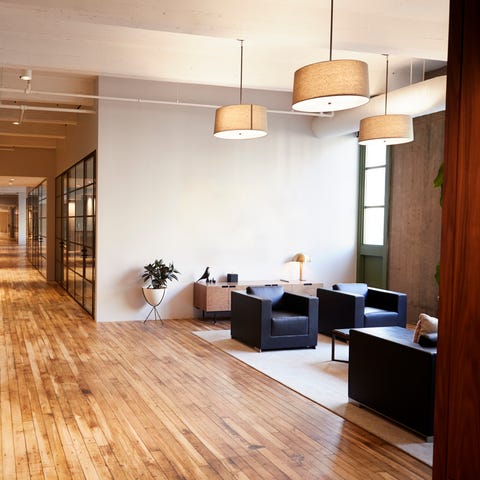Parquet floors can create a sense of warmth and elegance in a home or office. However, hardwood floors can also be a nightmare for your cleaning company to keep a good look. Knowing what to do and when to do it will help you keep your hardwood floors in top condition.
Before starting a parquet floor care program, it is advisable to ask questions about the floor background (finish used, last sanding time, etc.). If this information is not available, you will need to assess your gender to determine its condition. Some basic observations of wood and finish will help determine what type of cleaning or re-polishing is required.
Start by assessing the condition of the wood. If the floor is severely damaged, deformed planks, and significant wear, the entire floor may need to be replaced. But this is the worst-case scenario. Examine the entire floor, including the edges, and notice differences in floor level. Below are the categories that can be assigned to a floor:
A. Overall very good condition. The parquet floor looks good or may even be new. The floor may just need a good cleaning to regain its shine.
B. Slight abrasions. The floor is in fairly good condition, but has a few scuffs and scratches, especially in high traffic areas.
C. Heavy wear. There are quite a few scratches, scratches, and dents on the floor, and it looks worn out in places. It may even have several expansion cracks.
D. Distorted appearance. The planks on the floor have slight deformations, uneven planks, and a lot of scratches and scuffs.
Then decide on the state of the finish. For example, if a finish has deep cuts, scratches, or chips, it can go through the finish and penetrate the wood itself. Look at the finish, decide which categories apply:
A. The floor is finished but looks dirty. The floor likely just needs a good cleaning to bring back that glossy shine. For more information visit Tile Sticker Company.

B. Coating is lightly scratched, dented, and chipped, and will wear out (or become dull) in high traffic areas.
C. The trim is chipped in many places. While the floor is definitely finished, there are slight scratches, scrapes, and dents all over the surface.
D. The coating is worn out. There is almost no decoration on the floor. Deep potholes may appear in the finish from dragging furniture.
E. No decoration. The coating is missing or cracked and looks poor.
If the wood and trim are in good or reasonably good condition, the next step is to do a good cleaning and start a routine maintenance program. If the wood (category C, D, or E) or finishes (C, D, or E) are in poor condition, you may need to do more research or consult a professional on how best to proceed.
Proper maintenance of hardwood floors is essential to keep them looking good and to prolong their lifespan. It is extremely important to remove all dirt, food debris, sand, and other debris that may get on your hardwood floor. Dirt that does not remove quickly can be “masked” by the pattern or color of the wood, making it not only difficult to see but also easy to ignore. There are several tools that can be used to remove dirt:
- Brooms – be sure to use a broom with “blown” ends, which can collect dust and fine sand.
- Vacuum cleaners – any type, except for an upright vacuum cleaner with a whipper and brushes. This could damage the floor.
- Dust mop. Dusting and vacuuming are the most effective methods for removing debris from floors. If you are using a dust mop, buy a high quality 18 ”diameter head mop. Use a dusting brush to brush the mop-up to pick up dirt and not just push it.
Regular sweeping, vacuuming or dusting are great for getting rid of the dirt, but you’ll still need to mop the floor. It is best to mop the floor. Use a neutral cleaner (pH 7) designed for wood floors and follow the instructions for use of the product. Here are some tips to help protect the hardwood floors you care about:
Good coverage is the best way to prevent harmful soil and sand from getting on your floor. Mats at the outside entrance will help remove some dirt. Make sure that all mats used inside (and on the floor) are of good quality, with no rubber cover. Plasticizers used to make some carpets can migrate or move from carpet to wood flooring.
High heels can cause permanent damage to wood floors. Spiked heels can create pits in parquet floors. In business, it may not be possible to remove high heels from hardwood floors, but if you are cleaning a floor in a living space, You can also inform the landlord of any high heel problems.
Dragging furniture across the floor. This can cause scratches and dents on the floor. Every time furniture needs to be moved, it must be lifted and moved. Furniture legs need to be in good shape. A free leg on a chair can bite into the floor anytime someone sits on a chair.
Spills (food, cleaning products, alcohol, oils) can damage finishes and wood. Clean up spills as soon as possible.
Bright sunlight can lighten, darken, or dry wood. You may need to cover windows with curtains or blinds to keep UV rays out of the wood.
Harsh cleaning agents can damage the flooring. When cleaning floors, use a neutral cleaner made for wood floors. You will notice a beautiful parquet floor. Proper floor care will keep your floor shiny, your customers happy and your money profitable!
I am a professional content writer having more than 5 years of experience. I am passionate about writing content on health, beauty, fashion, and travel.